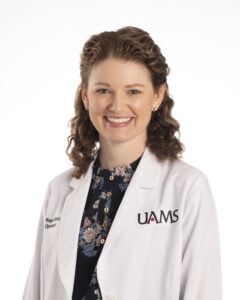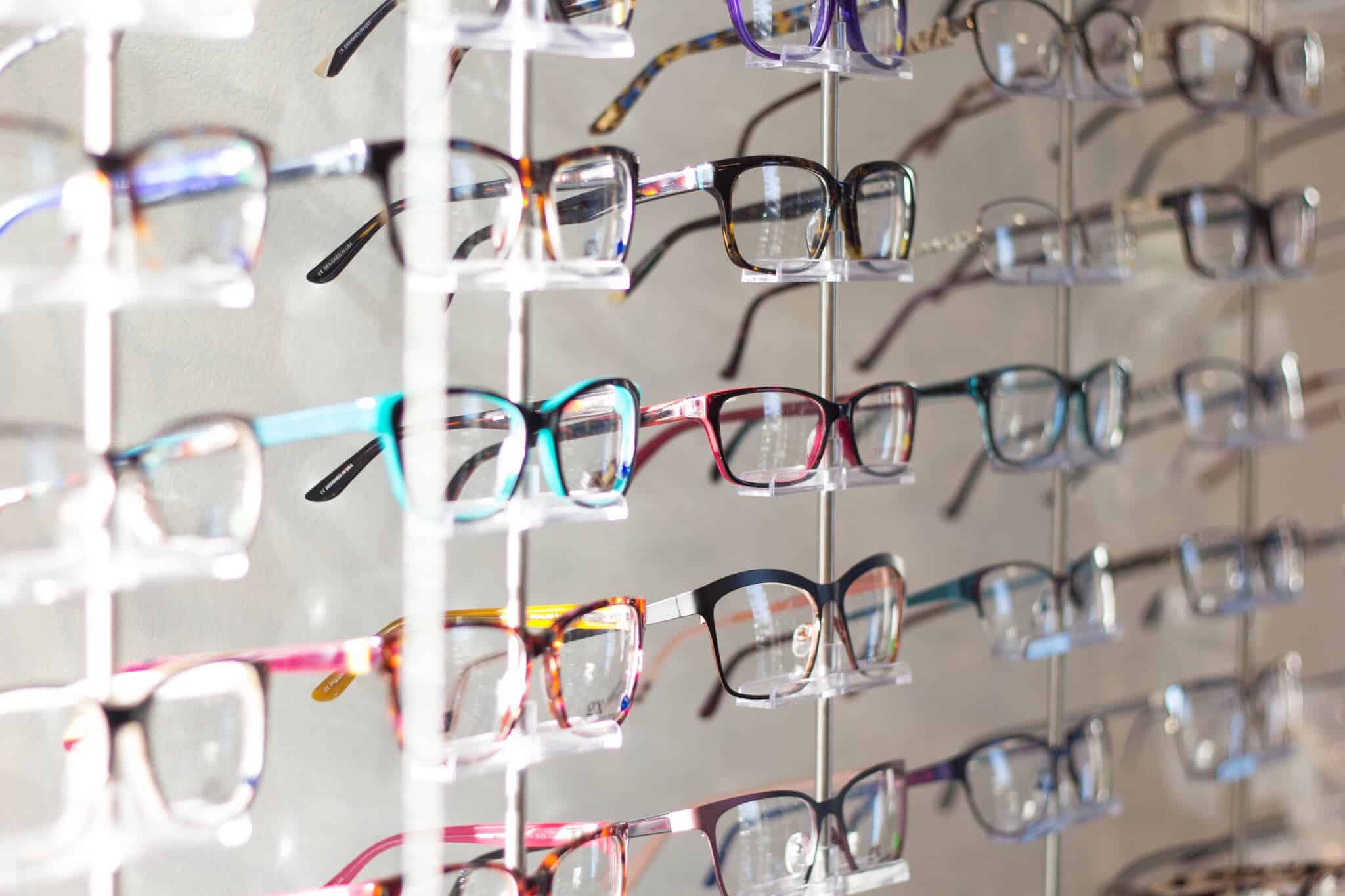Low Vision Clinic Helps Patients Get Their Quality of Life Back
| Most people are familiar with needing glasses for being farsighted or nearsighted. Low vision, however, can’t be fixed with glasses, contacts, or other standard treatments like medicine or surgery. There is a way forward, though, and it starts at the Low Vision Clinic at the UAMS Harvey & Bernice Jones Eye Institute.

“Our patients may have vision as good as 20/50, but they categorize as low vision because there is something specific in their life that they can no longer do,” Shirey said.
Low vision is a vision problem that makes it hard to do everyday activities. According to the National Eye Institute, 7 in 10 Americans who are visually impaired have low vision. While vision loss can affect anyone at any age, low vision is most common in people over 65.
Low vision is usually caused by eye diseases or health conditions. Some of these include age-related macular degeneration (AMD), cataracts, diabetes and glaucoma.
For people with low vision, activities like reading, shopping, cooking, writing and watching TV may be hard to do. They may have trouble recognizing the faces of family and friends or matching the color of their clothes. Reading traffic signs or store names may be difficult, and it may feel like bright lights are dimmer than normal. If identified early, rehabilitation can be effective, helping people maximize their remaining vision.
“Our patients may have vision as good as 20/50, but they categorize as low vision because there is something specific in their life that they can no longer do,” said Megan Shirey, O.D., an optometrist at the Low Vision Clinic, which opened in 2011. About 75% of the clinic’s patients are over 65, while the rest are younger patients, including people born with genetic eye diseases.
Patients come to the clinic after getting a referral from their eye doctor. The weekly clinic goes deeper than an average eye exam to get patients what they need, Shirey said.
“We block off an hour with each patient to spend extra time discussing their diagnosis and really tailoring the exam to what they need,” she said. “It’s not as straightforward as routine care.”
An optometrist does about half of the evaluation for the patient, Shirey said, including making a prescription for glasses with special accommodations for low vision. The clinic has various aids and devices to help people with low vision and also offers driving tests.
Shirey said the most common issues they see from patients with low vision is difficulty reading things like newspapers and medication bottles and recognizing faces or expressions.
“We always ask patients to bring the things they’re having trouble seeing,” she said. “That way we can use it here with the devices and get them to the point where they’re able to see.”
The clinic also has an in-house occupational therapist, something Shirey said most low vision clinics lack. The clinic’s occupational therapist is Jessica Holton, OTR/L.
“My role is to work with each patient to discover ways to do what they need to do in their daily lives despite the loss of vision,” Holton said. “Whether that is through a low vision aid for driving or a magnifier for reading, or environmental adaptations like increased lighting, my goal is to teach and empower them to continue living a safe, independent and healthy life.”
“She sees the patient the same day and helps with things like daily living and tips to make things inside the home to make their lives easier,” Shirey said. “It’s really nice that we have that team-based approach, where we each offer something to the patient.”
Open only on Mondays, clinic staff see a limited number of patients to allow for more tailored exams. However, this individual level of care means most patients get exactly what they need on their first visit, which means few, if any, follow-up visits, Shirey said.
“Once the patient is done with that big morning consult, they leave with a list of devices that will benefit them and sometimes multiple glasses prescriptions for different tasks, so they leave with everything they need,” she said. “They usually only return when their condition has progressed.”
If there’s something a person has always been able to do, like read a newspaper, and now they’re unable to because of a change in vision, they should seek out the Low Vision Clinic, Shirey said.
“We still see new patients who say ‘Wow, I wish I’d known about this place sooner,’” she said.
